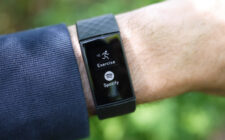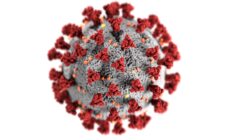Parkinson’s disease is one of the most commonly seen degenerative nerve disorder mainly affecting the motor nerves. Doctor James Parkinson was the first one to describe about this disorder as shaking palsy in the year 1817, hence named as Parkinson’s disease.
Parkinson’s disease can affect everyone but the disabilities and impairments vary from person to person.
Possible causes:
Parkinson is mainly caused by the loss or degeneration of the dopamine producing cells in the substantia nigra in the brain which leads to decrease in the chemical in the brain called dopamine. Dopamine acts as the ambassador or a transmitter to maintain smooth communication between the nerve cells to produce balanced smooth and controlled movements.
Risk factors involved:
These degenerative changes can be put into high risk by the following
- Age – even though Parkinson’s disease can affect people of all ages, old age people more than 60 years of age are the high risk of this disease
- Sex – mostly the men are at high risk than women
- Family history – few are at the risk of the acquiring the disease because it run in the family.
- Head injury – any severe injury to the head in any accidents can affect the brain and increase the risk factors
- Exposure to toxic substances or chemicals
- Living in the unhealthy environment
- Particular genetic type is more prone to Parkinson’s disease
Symptoms shown by Parkinson’s disease:
The Parkinson affected person exhibit certain symptoms and signs as the following
- Tremor – this is the primary symptom seen abruptly. The person feels tremor in the fingers, hands, arms, feet, legs, jaw and head. Usually the tremor gets worse in stressful and excited situations.
- Severe Stiffness or rigidity in the extremities and trunks
- Severe muscular aches and painful movements
- Diminished and difficulty in voluntary movements
- Difficulty in movements and rigidity can produce a mask like appearances
- Loss of reflexes making the balanced posture more difficult
- Improper gait coordination – person feels difficulty in walking and balance
- Constipation in few cases
- Changes in the speech pattern
- hunched back posture
- severe anxiety feeling
- mental confusions
- depressive behaviours
- memory impairments
- excessive sweating without any cause
- disturbances in the eating and smelling
- unusual urgency to urinate
- few autonomic dysfunctions
Diagnostic methods:
As of now there has been no diagnostic methods exist for the easy detection of Parkinson disease. Even the EEGs, CT SCAN and MRI scans seem to be not effective in diagnosing Parkinson disease.
Doctors can only diagnose the Parkinson’s disease after the physical and neurological examinations. He takes a close look at the patient`s history and the symptoms shown by the patient. They are very precise in ruling out other disease of the brain having the same symptoms.
The neurological examination is done to test the coordination and balance and the reflex activities. Doctors check for the walking pattern and any disturbances in the smooth reflex action in the movements.
Few tests are done to check for the mental capabilities and the extent of effects in the behaviour processes.
Only in the old aged people the symptoms can easily point out Parkinson in the worse conditions.
Earlier detection is a must to make a good treatment plan to maintain the quality as much as possible.
Treatment methods:
Actually there are no complete cure is available for the Parkinson’s disease, the aim of the treatment methods is to control the symptoms to certain extent and prolong the quality of living in possible manner.
Medications are the mostly reliable way to control the symptoms. Mostly they aim at the increase in the dopamine level in the brain areas. Considerable improvements can be seen only in the early stages of drug administration. Later it slows its effects but fairly controls the symptoms.
Most commonly used medications are
- Levodopa
- Carbidopa-levodopa – prevent early change of dopamine outside brain
- Pramipexole – dopamine agonists
- Amantadine – anticholinergic drugs
- Entacepone
- Ropinirole
- Selegiline
- Rasagiline
- Anti depressant drugs
- Drugs for sleep disorder
- Pain killers under doctors advice
Surgical procedure:
In few cases surgical procedures are undergone. Mainly done is the deep brain stimulation. In this method the electrodes are specifically placed in particular area of brain where movement control largely take place.
The surgeries are not the definite cure but they can ease the symptoms to live a quality life for long period.
Living with Parkinson disease:
To cope with Parkinson’s disease follow the following steps
- Try to add more nutritional foods and supplements in the diet
- Few changes in eating habit and diet to cope with the swallowing difficulties
- Regular exercise pattern as advised by the doctors and physiotherapists
- Adjusting the movement pattern according to the efficiency of our body
- Complete regular rests are advised
- Psychological treatment to avoid stressful situations
- Improving the speech pattern and memory capabilities
- Prevent from walking backwards
- Prevent the falling postures
- Make changes in the normal daily life activities according to your safety and capabilities
- Proper family support and counselling of for all
- Reach the help of support groups in the society
- Take the doctor





